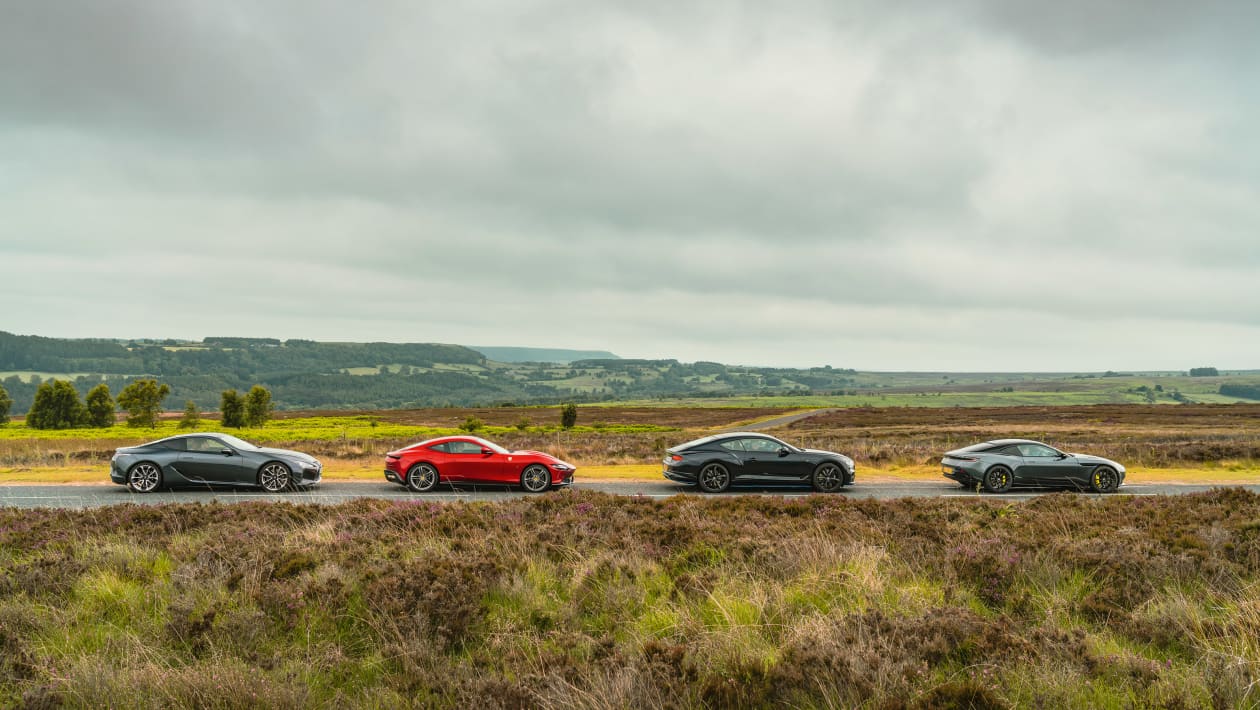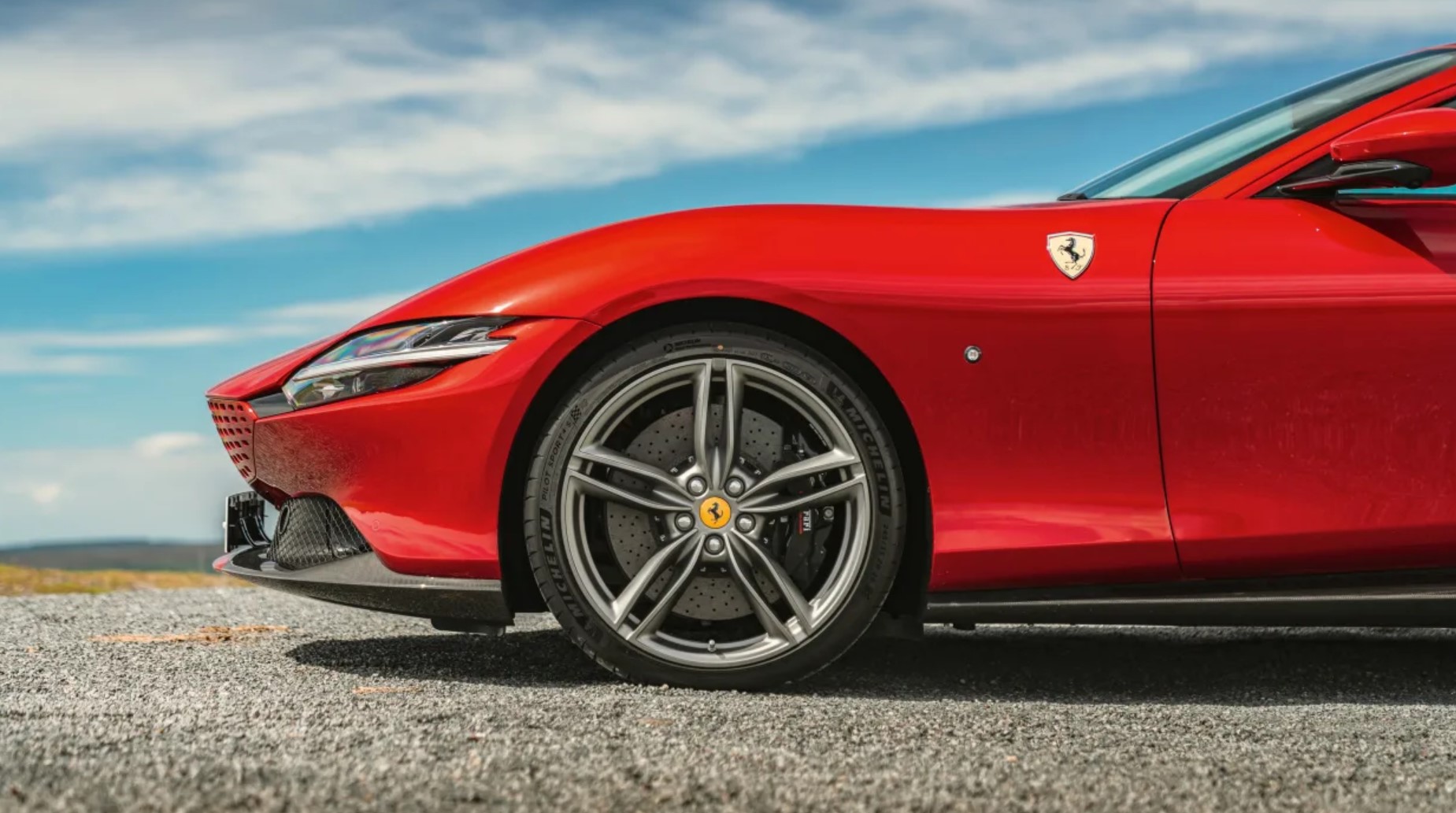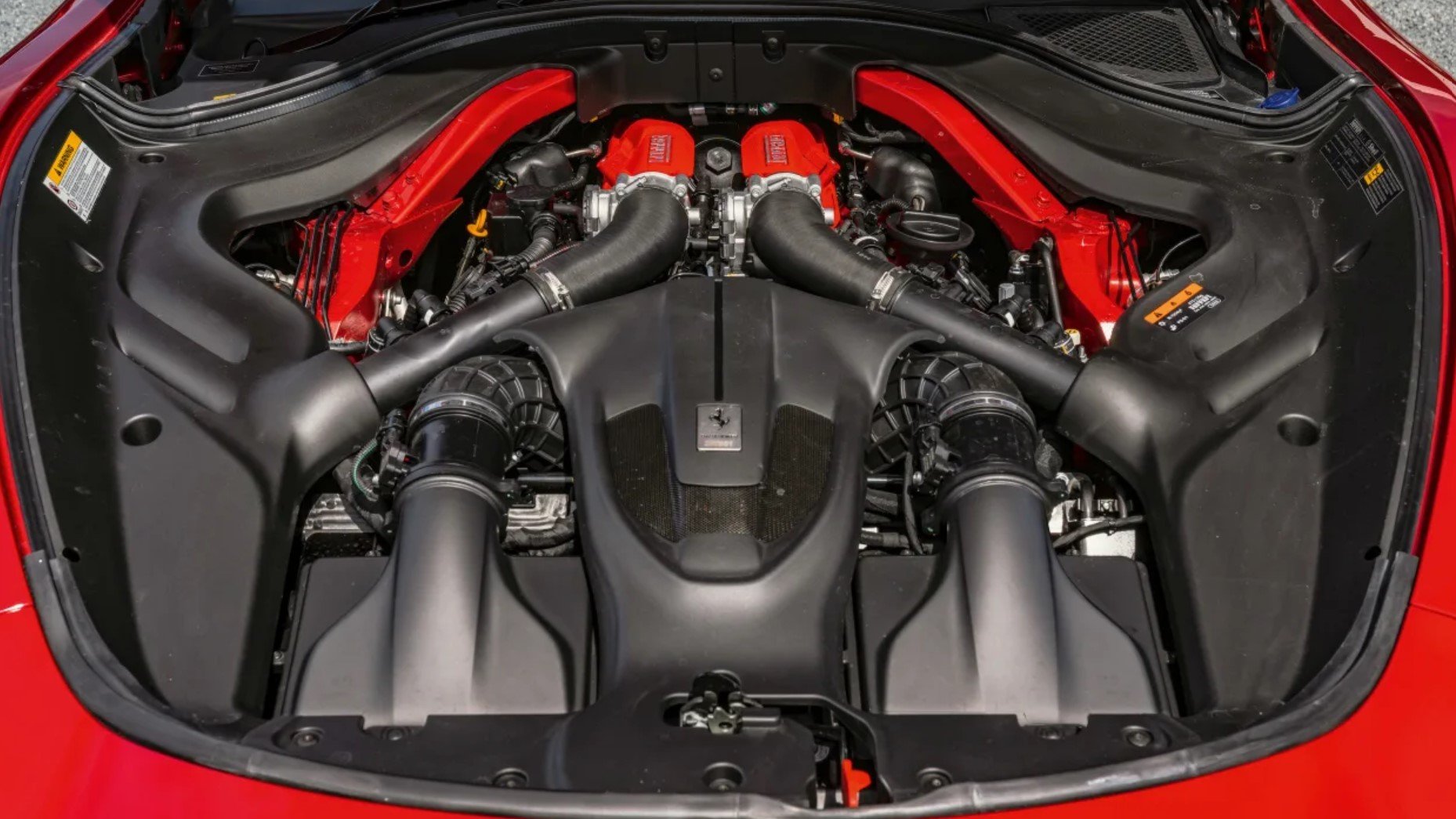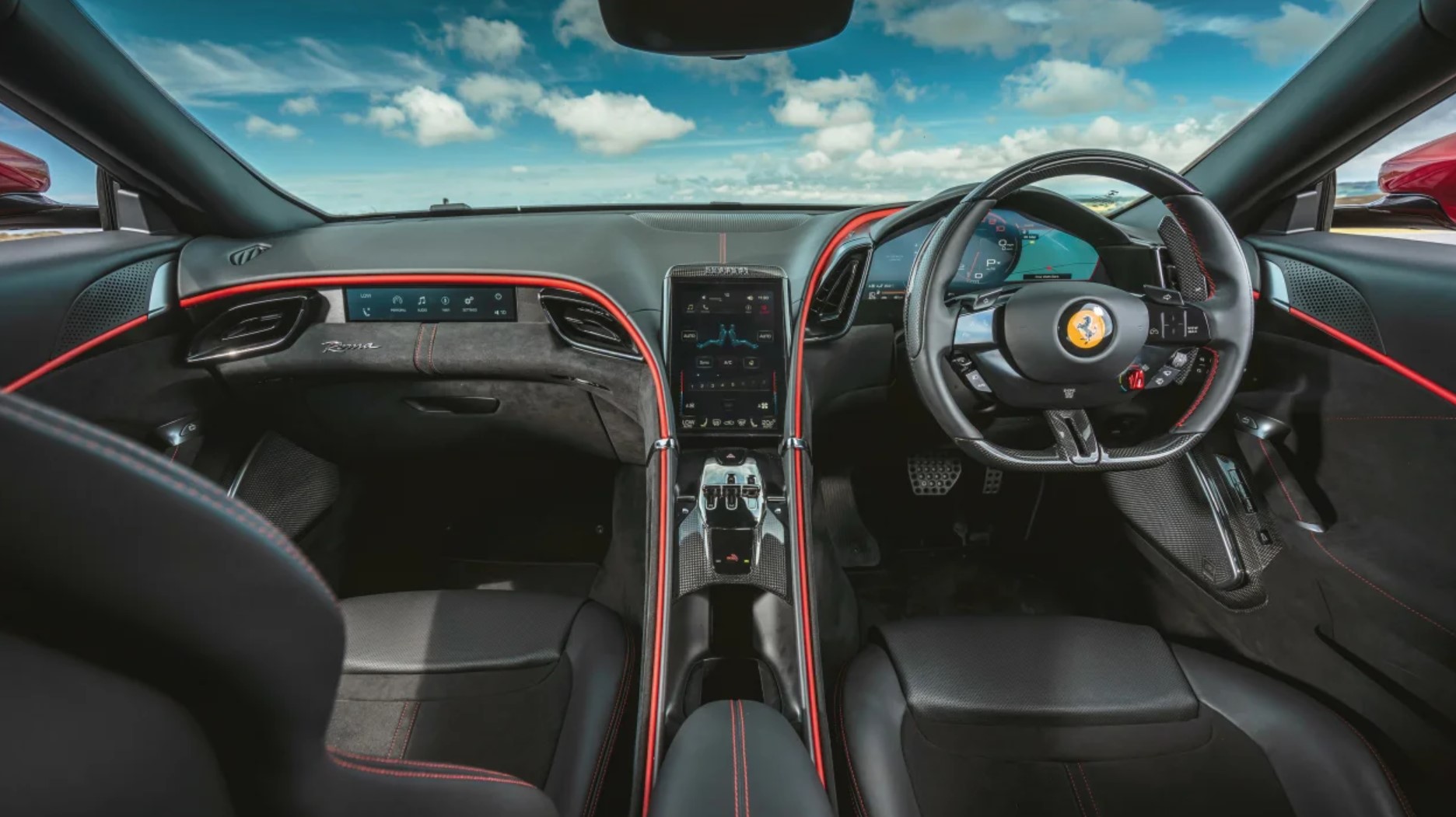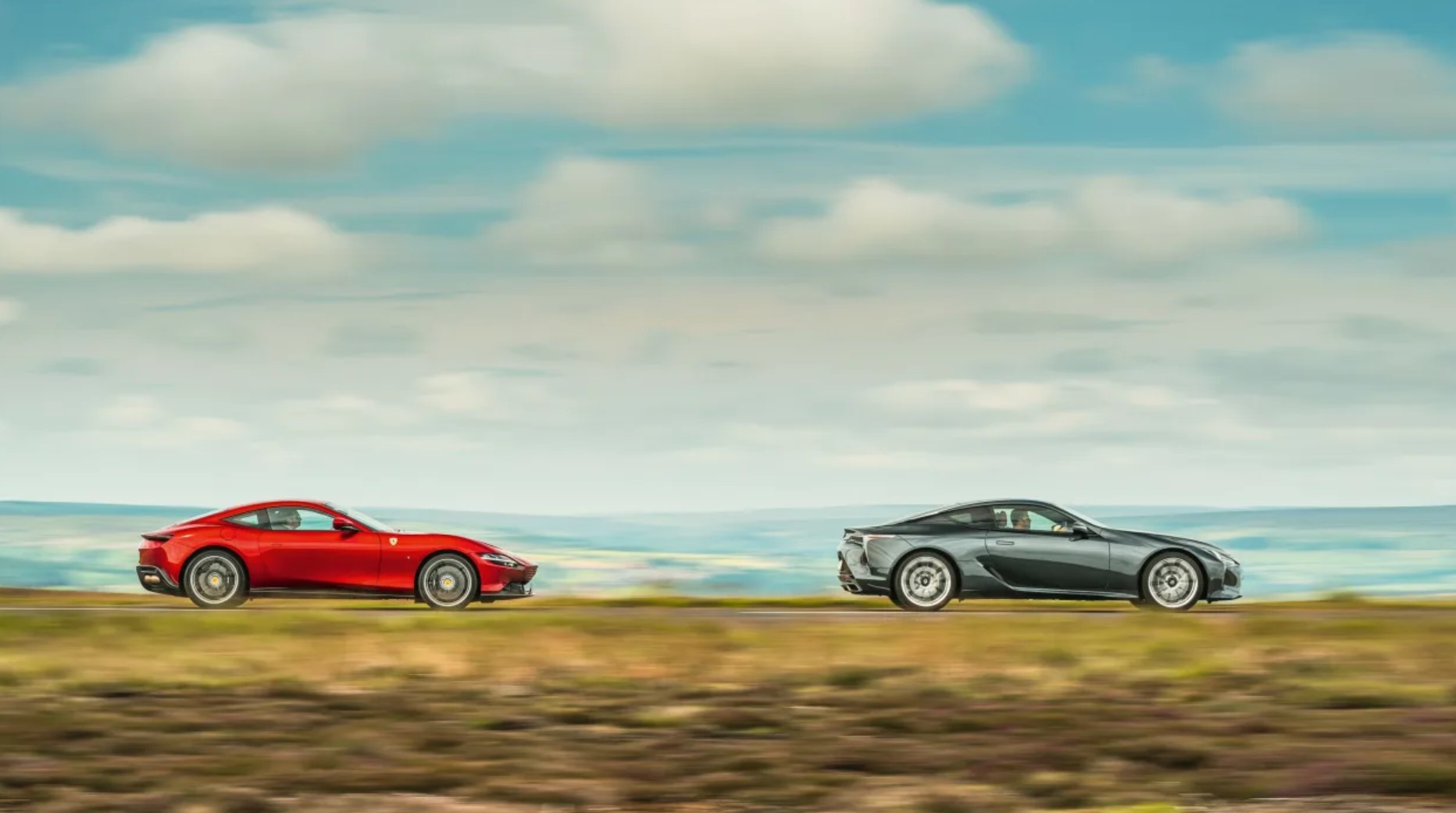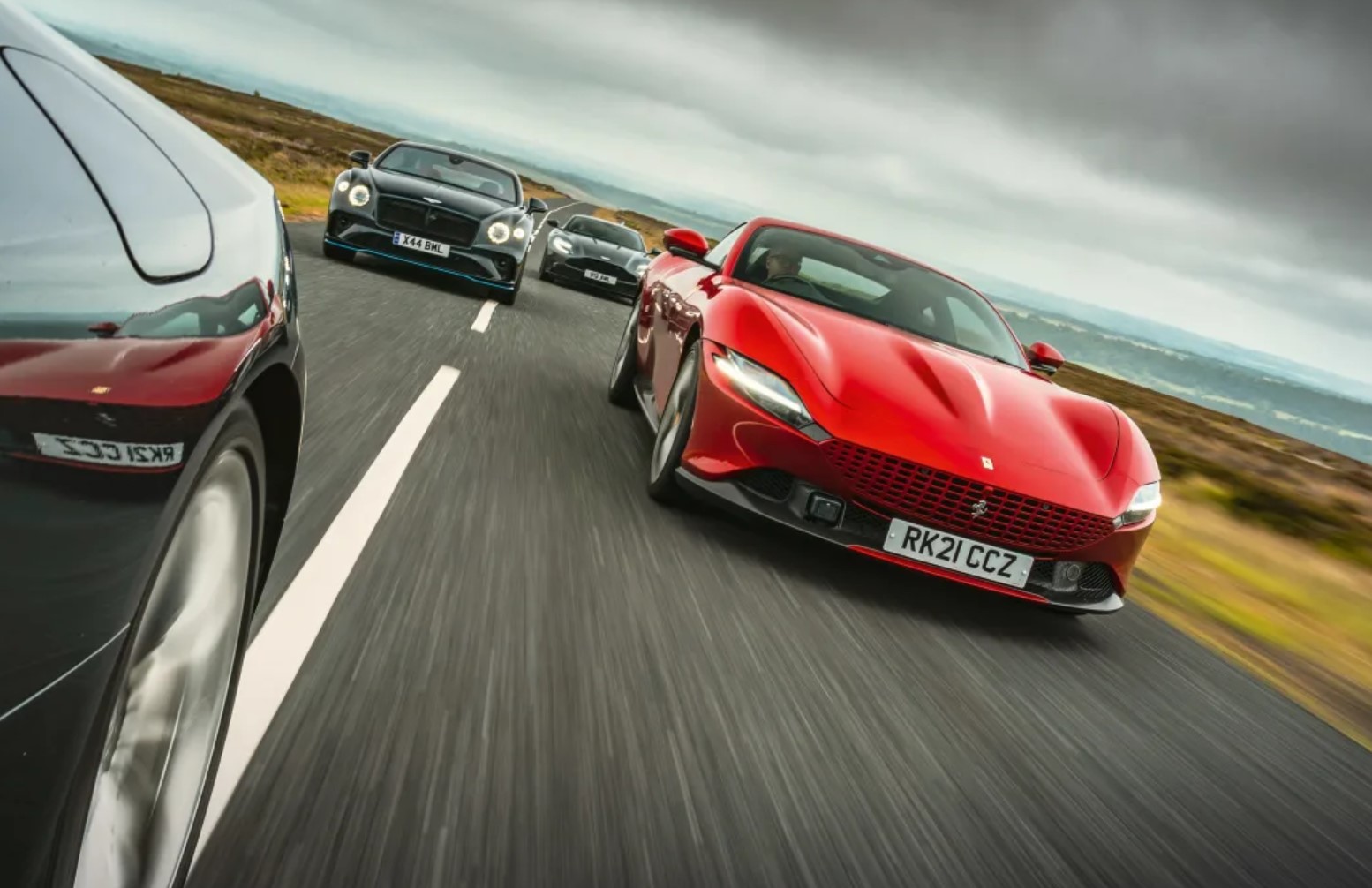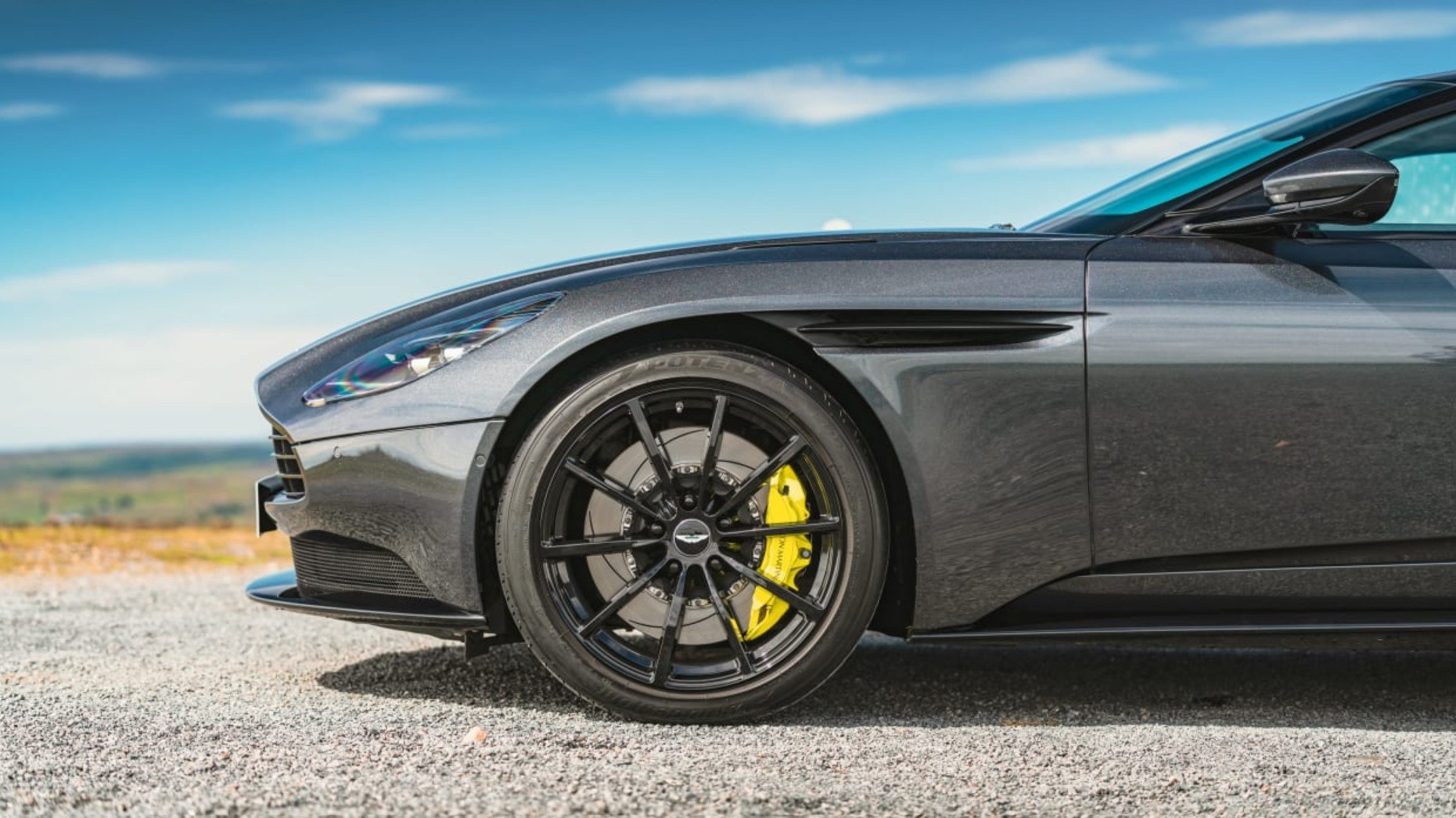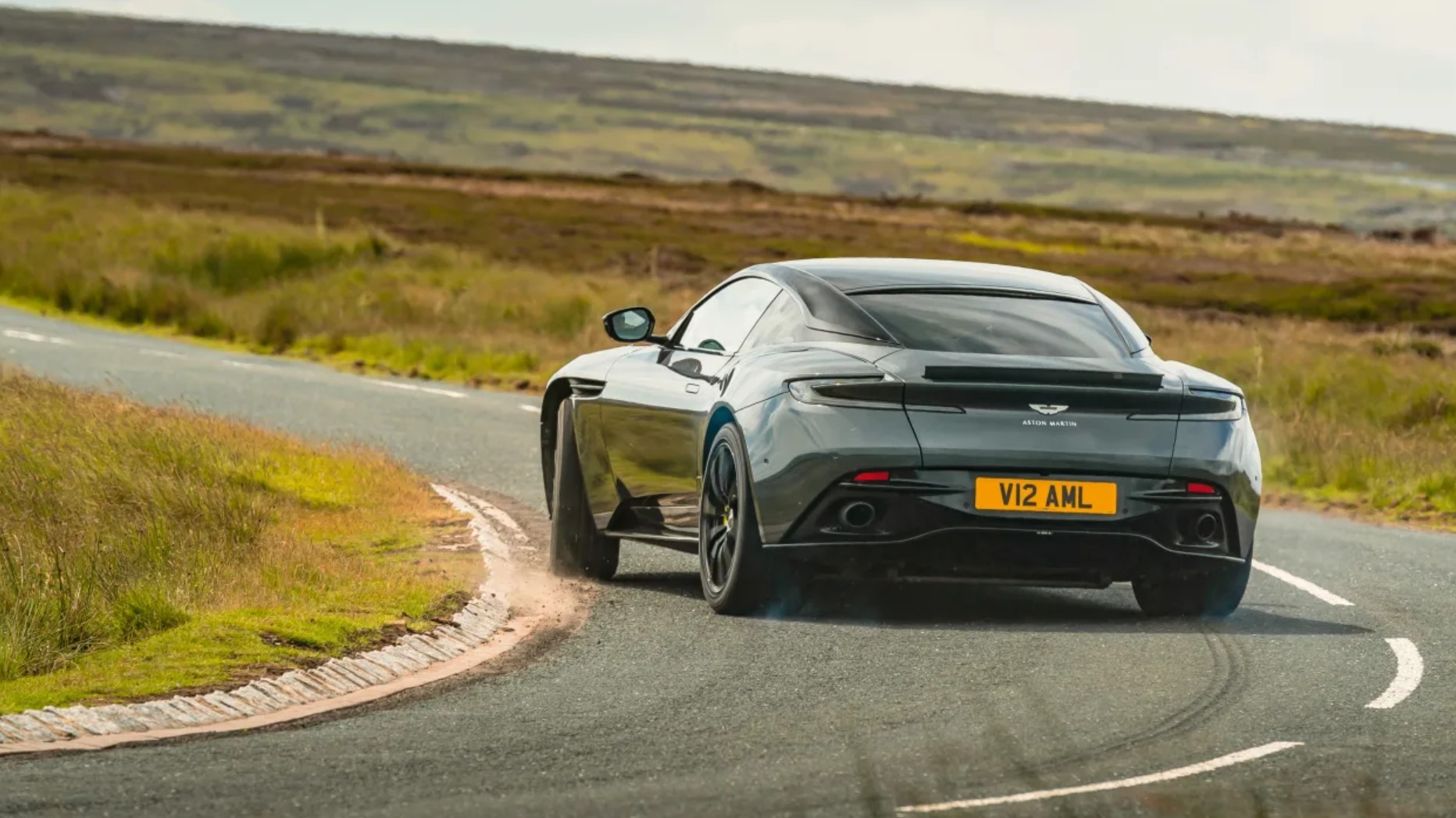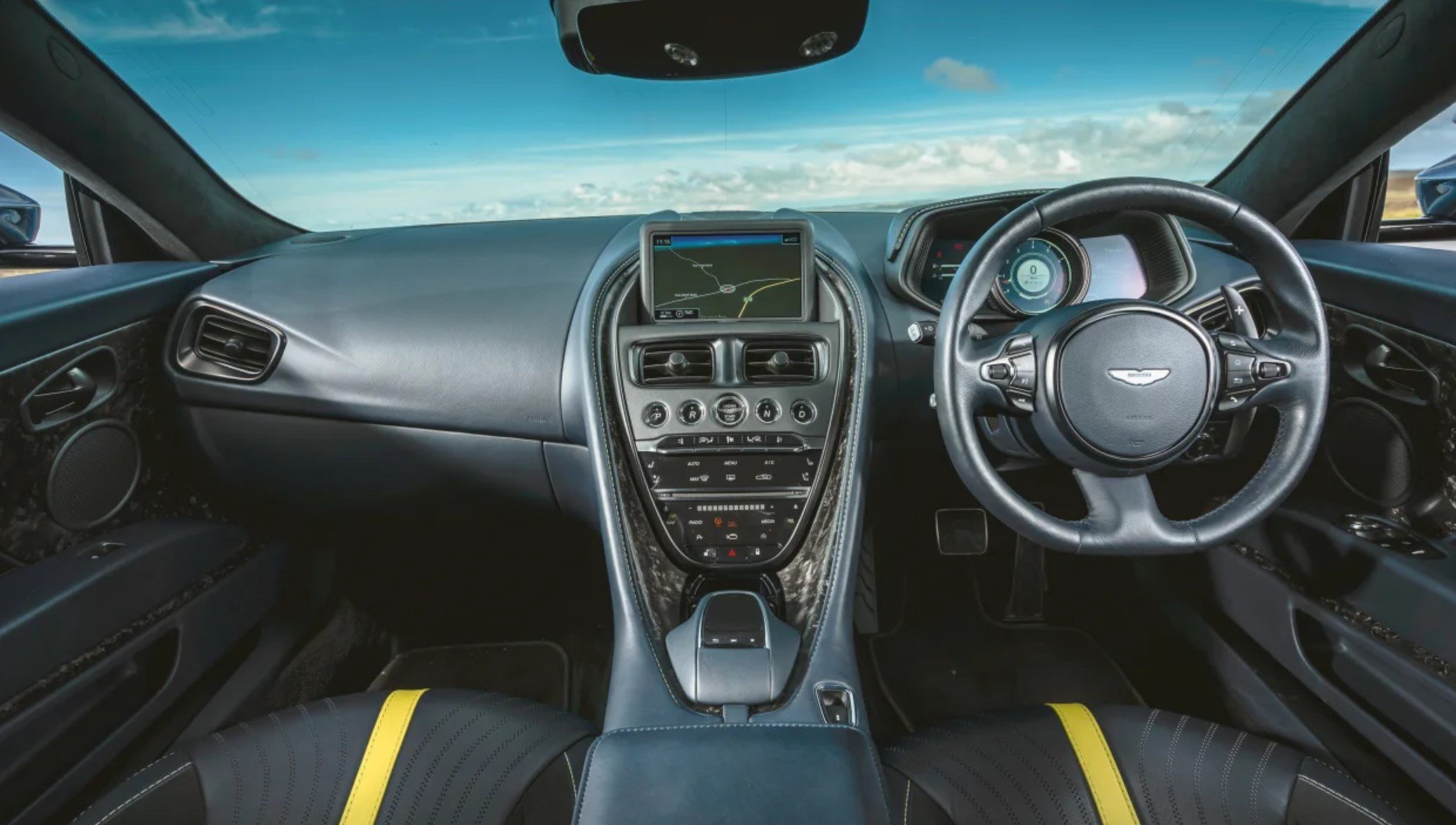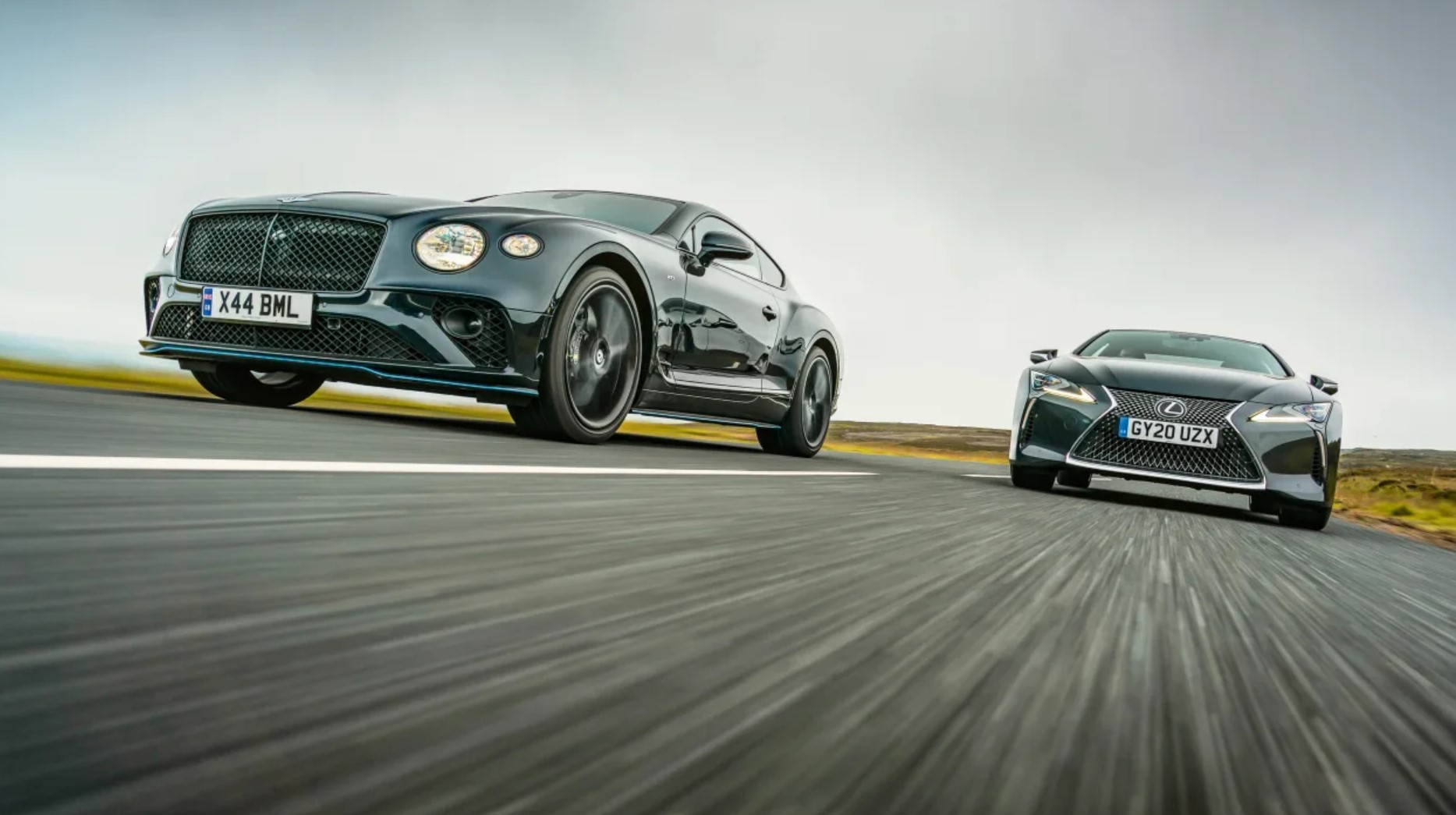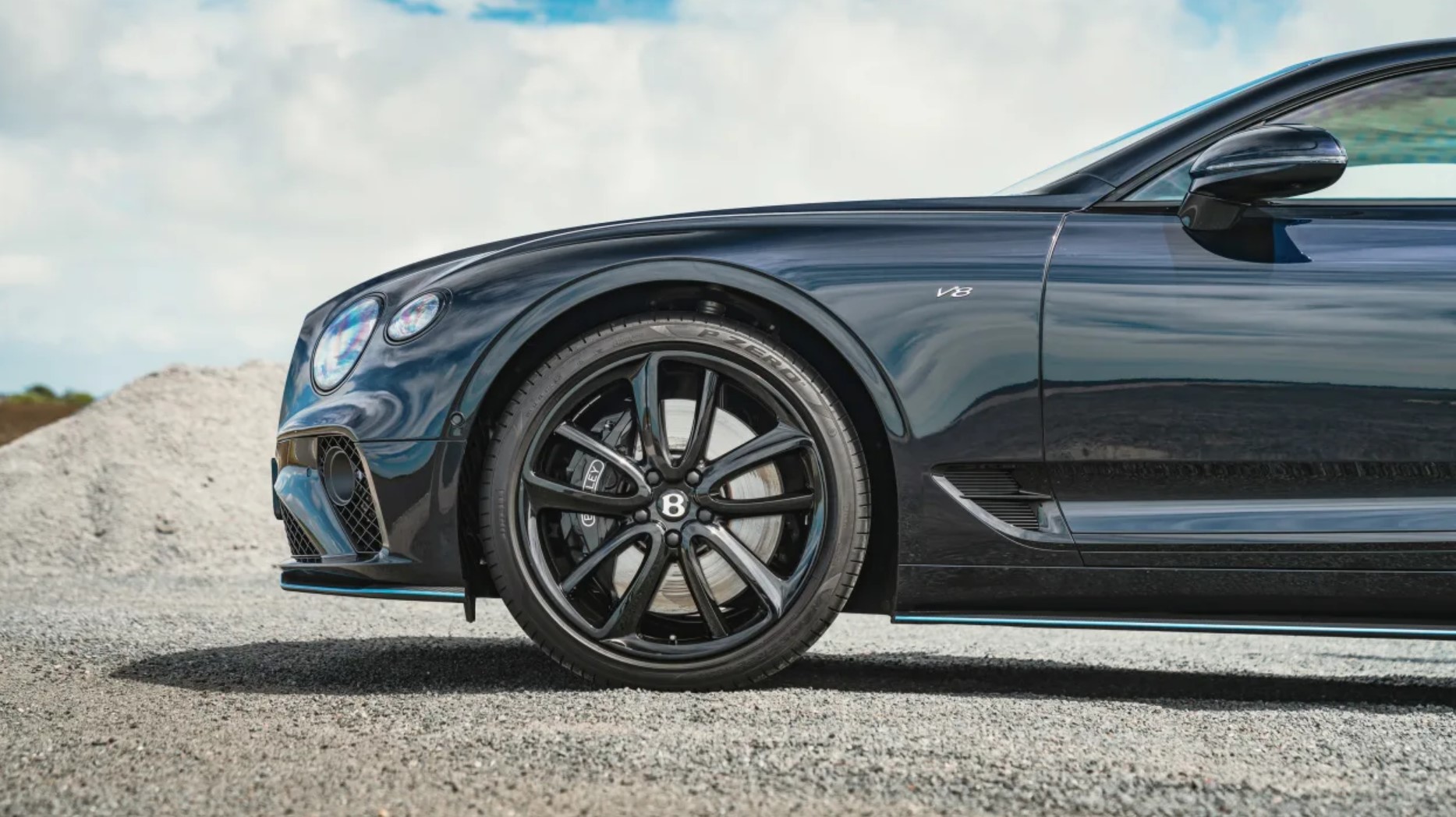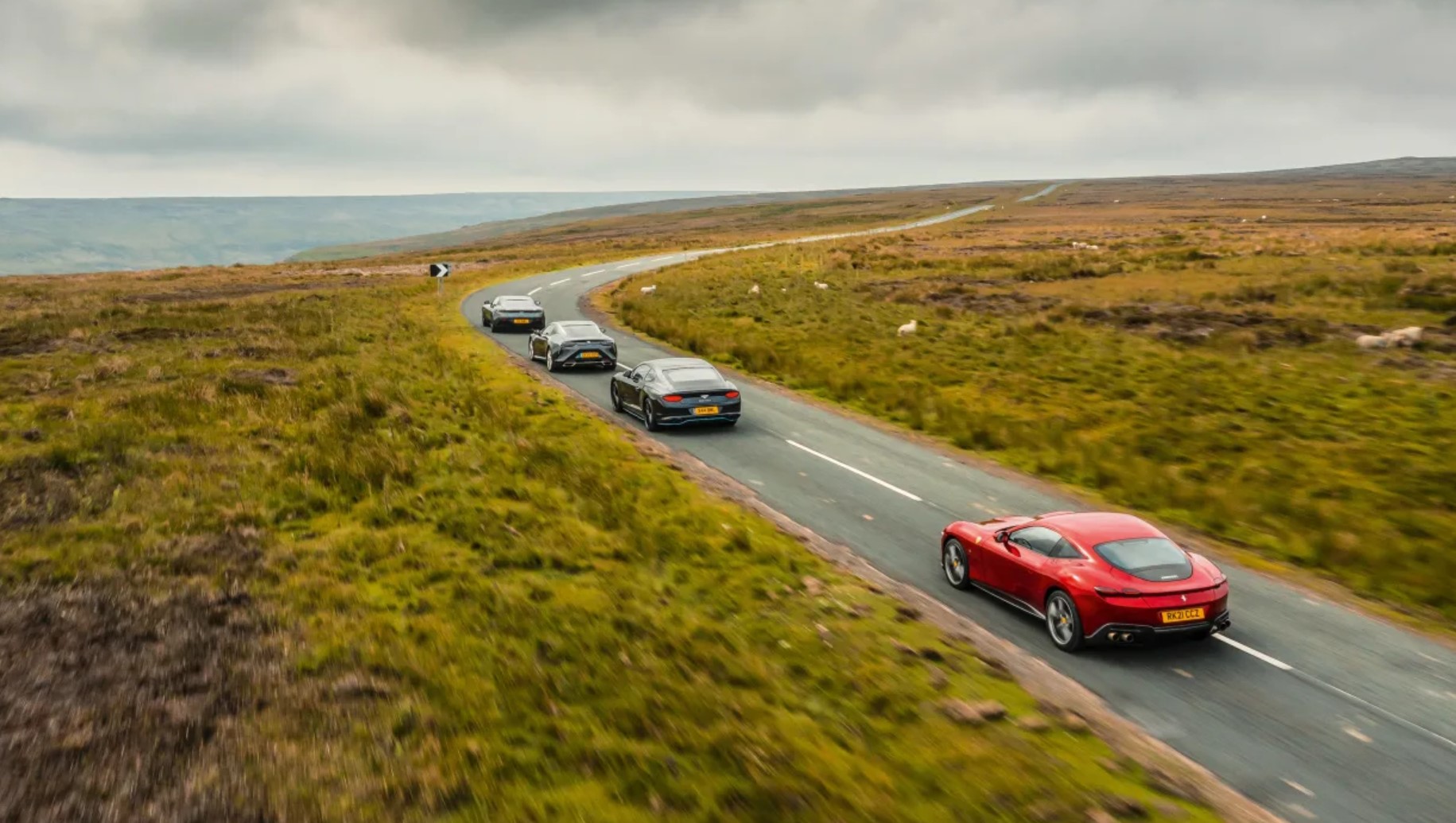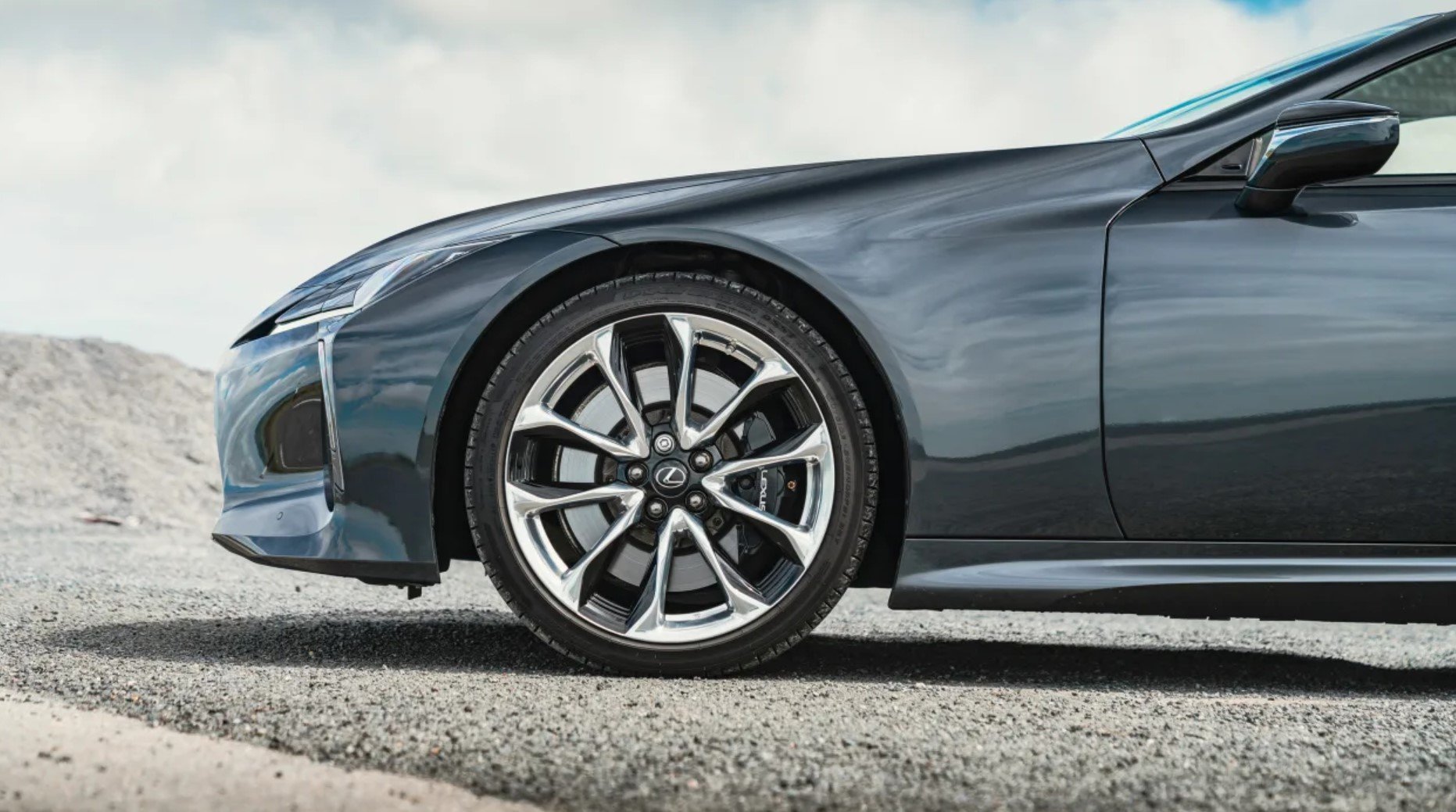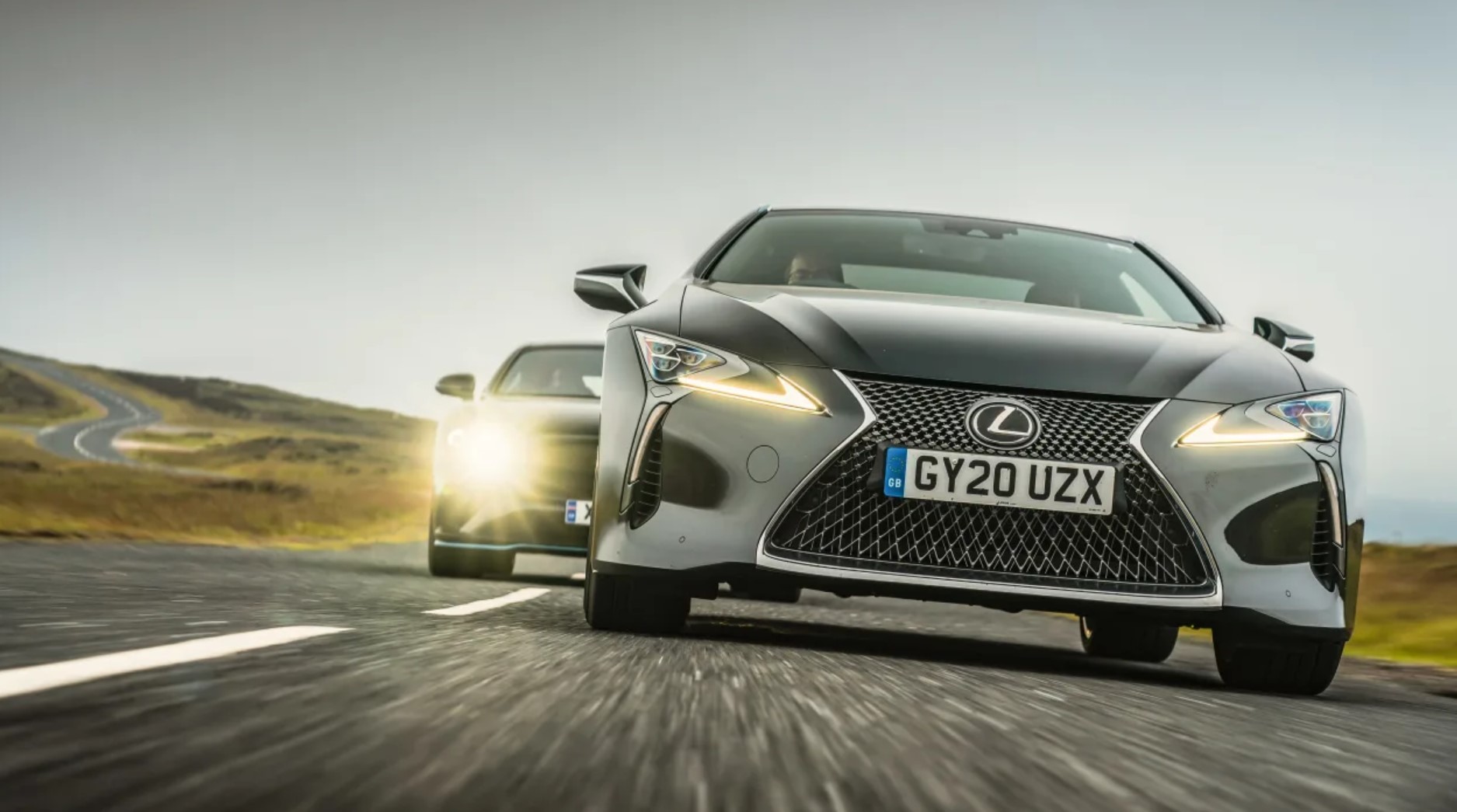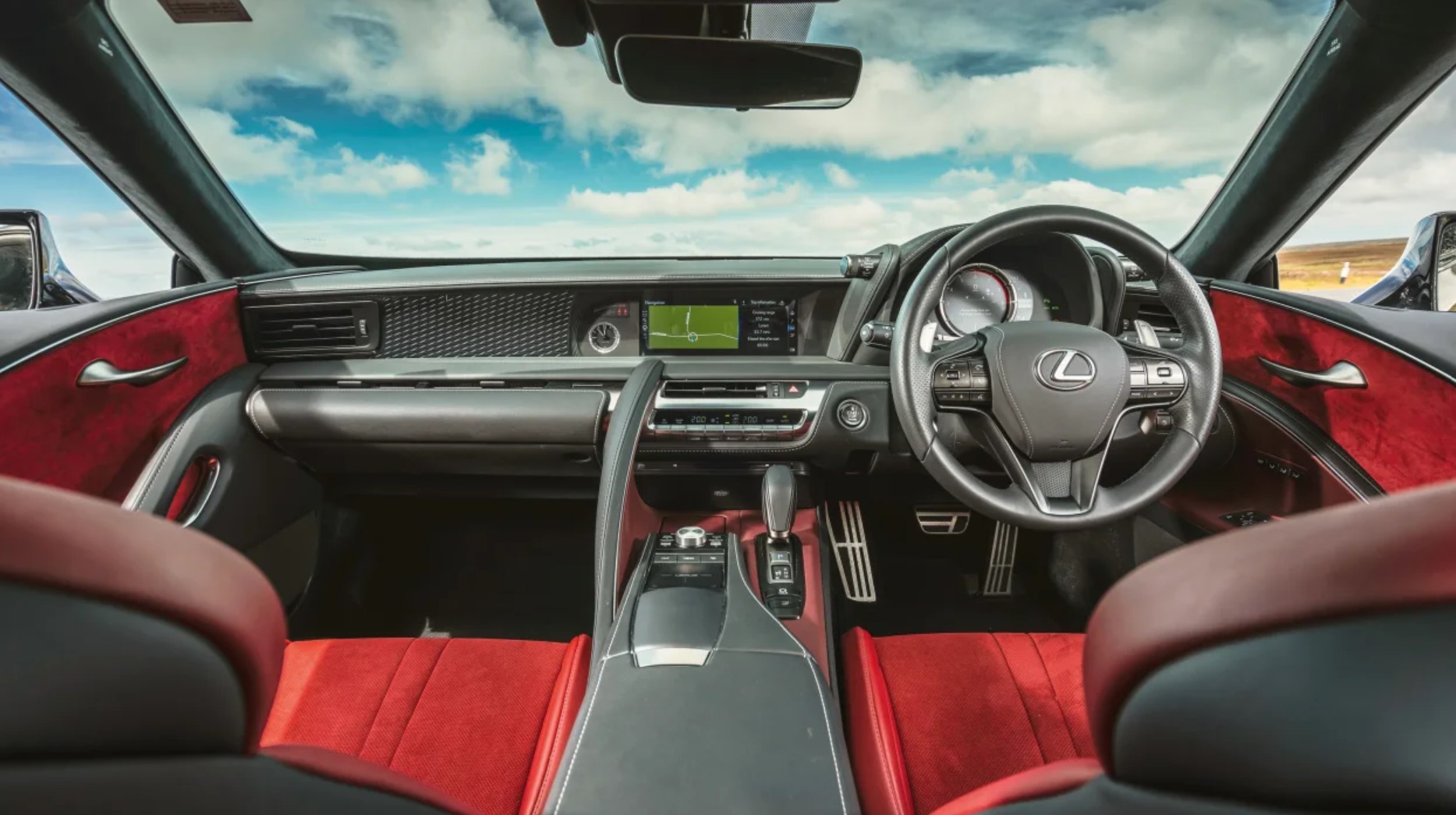Lexus LC500 v Ferrari Roma v Aston Martin DB11 AMR v Bentley Continental GT V8.
Thanks to Covid, the four-way blast down the Autoroute du Soleil in a Ferrari Roma and its rivalscan’t happen. Still, it’s reassuring to feel that same frisson of wanderlust upon seeing this gleaming new Ferrari emerge from its transporter and have its rather lovely enamel key pressed into your hand for this comparison of some of Europe’s best GTs, and one Japanese.
There’s something uniquely special about front-engined GT cars. More mature than aurally and visually shouty mid-engined supercars; less vulgar and far better to drive than profligate SUVs. A great GT tries less hard to attract attention, but possesses more charisma and intrigue as a result.
Sadly, supercars and SUVs outsell them many times over, which makes cars like the Roma, Aston Martin DB11 AMR, Bentley Continental GT V8 and Lexus LC 500 an increasingly esoteric choice. This then is a meeting of minds as much as metal; four fabulous and entirely individual machines that put their own spin on the classic front-engined GT.
We converge not on the south of France but the north of England, each of us making our own way to some of our favourite moorland roads. For me, this means three hours in the Ferrari Roma. Writer’s privilege? Damned right!
The Roma has been quite a departure for Ferrari. Yes, it shares its platform with the Portofino, but ample distraction was provided by the styling. Bold and curvy, with that quirky egg-crate front grille and shark-like overbite, it melds familiar Ferrari touches with clear Aston Martin influences. It’s a stunning looking thing, especially in this spectacular shade of Rosso Maranello.
Lift the bonnet and you find the familiar twin-turbo 3.9-litre V8. It seems odd to see it cradled in the nose of the Roma and not midships in the F8, but the installation is impressive, with the motor set well behind the front axle.
The interior is pretty dazzling, with lots of bright screens when the car’s awake and an array of controls mounted on the steering wheel. Embarrassingly it takes me a minute or two to find the starter, which is on the vertical lower spoke of the steering wheel and very discreetly marked. I try to style it out, pretending to admire the cockpit, but I don’t think the delivery driver is fooled.
The Roma fires with an energetic spin of the starter, followed by a bark and crackle as the engine exhales through open exhaust valves. Potent, if a little bit of a blare, it soon settles into a busy idle. You sit low, but the scuttle isn’t too high, so you still get a cracking view of the front wheelarches rising up at you and the prominent power bulge in the middle of the bonnet.
The eight-speed DCT transmission (first seen in the SF90) is brilliantly effective. The large paddles are satisfying to curl your fingers around, but you don’t have to do anything if you simply want to leave the Roma in D and make effortless progress.
The hardest aspect of covering miles in the Roma is not letting your speed stray into three figures. Cruising at discreet speeds reveals a surprising degree of road noise, and there’s also a slightly annoying resonance to the exhaust note, which is absent if you travel slightly slower. Or faster. It’s not so intrusive as to spoil the experience, but it highlights the Ferrari’s sporting bias. Something the others might exploit to their advantage…
We make quite a sight hogging the petrol pumps at our pre-arranged rendezvous point. All four cars look sensational without resorting to the razzmatazz of a supercar. They definitely cause a bit of a stir, even if in the case of the Lexus few if any of the gawping bystanders know what it is, other than something special.
It makes sense to stick with the Ferrari, as we’re pretty much on top of some great driving roads. There’s an energy and urgency about the Roma that’s unfailingly impressive. A sub-1600kg kerb weight certainly helps. The steering is clear and quick-witted, the engine brilliantly tractable, but with real underlying fizz that’s waiting to be uncorked. The ride has an edge to it but still manages to smother the worst of the road surface imperfections. And there’s the Bumpy Road mode to further soften things off if required.
There’s a welcome compactness, too, that combines with the sharp steering and agile handling to inspiring effect. As with all modern Ferraris, you need to be measured with your initial steering inputs, and even then the rate of rotation is such that you’re bleeding out of the steering almost as soon as you’ve made your first direction change. It’s not nervous, but it’s always alert and alive in your hands. Similarly, the sharp brakes respond best to the same precise, measured inputs. They’re not grabby, but you need to adjust your inputs if you’re to make satisfyingly smooth progress.
As you’d expect, the performance is pretty epic. A peak of 450kW might seem modest compared with, say, the 812 Superfast, but the Roma is nothing short of ferocious when roused. With 760Nm of torque from 3000rpm there’s heaps of low and mid-range muscle, so you can make outrageous progress without ever breaching 5000rpm. Opportunities to explore the full 7500rpm rev range are understandably fleeting, but when you do the Roma yelps down the road. In some respects the V8 feels more at home here than in the F8, and the paddleshift transmission is a joy to use. All it lacks is a truly musical engine note.
As with all contemporary Ferraris, what’s most impressive about the Roma is its fidelity. Such is the exactness of its chassis and powertrain integration it always feels in harmony with itself. And thanks to the genius of the manettino settings, you can pretty much guarantee it will also find harmony with the road. It’s an impressive and seductive blend of fine Ferrari GT tradition and 21st century technology.
Swapping from the Roma to the DB11 AMR immediately highlights the Aston’s main weakness, which is its interior. It has always felt and looked a bit cheap compared with the old DB9’s (something the AMR’s incongruous stripes and embellishments do little to hide), but now it also seems way off the pace in terms of technology, too. A new interior is coming, and on the evidence of this test it won’t be a moment too soon.
Things look up once you start the twin-turbocharged 5.2-litre V12. Nothing beats 12 cylinders for kudos, and the Aston certainly has some swagger. It’s worth making the point that, when comparing the prices, Ferrari is charging V12 money for a V8 car, so the Aston presents good value. At least if you put an emphasis on what’s beneath the bonnet.
Where the Roma is an exercise in ramped-up response and fast-twitch delivery, the Aston is a lesson in a less dramatic but arguably more rounded dynamic set-up. The AMR is much improved over the early DB11, so there’s good control of vertical body movements. There’s also greater connection with the front end, and more grip to lean on. As you explore more of its performance the nose remains nailed; the limitation is at the rear, as we’ll see.
The front’s rate of response is keen but more intuitive than the Roma’s, so you need less time to acclimatise before you can really enjoy steering the car through corners. On the downside, the switch controlling the dynamic modes is fiddly and you have to cycle all the way through the modes rather than toggling back and forth, so you’re less inclined to find the optimum mode.
This is a shame, as the DB11’s breadth of character is especially pleasing. It will settle nicely into a languid, loping stride, so it’s a bit more relaxing than the Roma at a steady-speed cruise, while the 463kW V12 purrs away nicely in the background without any boominess. Wind/road noise is more subdued, too.
Conversely, when you ramp things up, the contrast between this mellow, mile-eating mode and full-noise is almost startling, such is the AMR’s explosive performance. Truth be told it’s a bit too much for the chassis, which can struggle to find traction, even in a straight line. That’ll be the effects of 700Nm from just 1500rpm. You need to have your wits about you, especially as there’s some inconsistency in the way the limited-slip differential hooks up. Sometimes it snaps into action and needs some catching, while other times it digs deep and drives smoothly out of the corner.
While it might struggle to contain itself at or near its limits, there’s a general polish to the feel of the DB11 that’s very satisfying, and it’s playful in a way you perhaps wouldn’t expect. The brakes have plenty of power matched with progression, and although not matching the immediacy of a DCT transmission, the torque converter automatic delivers crisp shifts when using the paddles and seamless progress when left in D.
It’s a warm and likeable character. One that feels more convincingly Aston than previous DB11s, largely thanks to its powerhouse of an engine, but also because it fuses the manners of a grand tourer with big-hearted performance. It’s certainly as exciting as the Ferrari in its own way, while managing to be more soothing when you’re simply making progress. What it lacks, aside from an up-to-date infotainment system and a quality interior, is that final layer of precision, control and sophistication that unifies every attribute of the Roma.
Aston and Bentley have long been rivals. Especially since both were reinvented at the turn of the century. For the latter it was the Conti GT that made the breakthrough, bringing the Flying B within reach of a new group of customers, and reconnecting Bentley with some of the more sporting strands of its DNA.
The current-gen Conti made significant strides in terms of handling and driver enjoyment over the original model, but it remains a GT that places an emphasis on luxury and prestige over pure dynamism. This is evidenced in all areas, from its smooth lines to its ability to cosset and its love of showy bling. Ultimately the things that set the Conti apart from its rivals in this test are rooted in its 2.2-ton kerb weight and the thick-set commitment to equipment and build quality that results in that prodigious mass.
To be fair the Conti is the only genuinely useable 2+2 here, the others making only a token gesture at accommodating anything other than bags on the back seats. The heft and solidity also manifest in an unshakeable, indomitable feel. Where the Ferrari and Aston work with the surface and are sometimes deflected by it, the Bentley steamrollers its way down the road. Given the physics at work it’s an impressive display, but in order to achieve this the all-wheel-drive Conti is inherently inert.
It also works harder to propel itself, the effective but distant V8 being somewhat anonymous and outgunned in this company with ‘just’ 399kW, though it counters with 770Nm of torque between 2000 and 4500rpm. Despite that abundant muscle it needs more throttle to punch itself between the corners with conviction. That weight works against it under braking and direction changes, too, Newton’s Laws conspiring to ensure the Bentley is the least gifted athlete of the group. You can lob it at a corner and maybe feel the car begin to slide beneath you, but it’s far from the car’s natural inclination. Better to drive in a more contained style and relish how the grip and traction deliver rapid, unflustered progress on roads that should prove its undoing. If that’s your bag, the Bentley won’t disappoint, but where the Ferrari is more of a firework and the Aston a stick of TNT the Bentley is a depth charge – hugely potent but rather unspectacular.
And so to the Lexus LC 500. With a starting price of almost $200,000 before on-road costs, it is punching well beyond its pay grade in this test. Yet parked with the other three cars it is arguably the star. Admittedly this depends on whether you see the LC as the son of LFA, but even if you don’t there’s no denying this rakish and unflinchingly bold coupe is a beacon of individuality.
The interior is even better. Think Bang & Olufsen crossed with 1970s futurism. What’s more, there’s exceptional substance to support the style. Everything feels and works with an oiled, engineered precision that’s a joy to use. And, thanks to the Toyota DNA, you know it will be impervious to wear and tear.
Beneath the bonnet is a naturally aspirated V8. Displacing 5 litres and developing 351kW at 7100rpm, it is comfortably the peakiest and least powerful engine in the test. This deficit is amplified by the torque peak of 540Nm at 4800rpm, but a ten-speed (count ’em!) torque converter automatic does its best to keep it on the boil.
Much as with its interior and exterior styling, the LC is a curious creature dynamically. There’s not much connection to the steering, but the chassis has excellent balance. Traction isn’t as strong as in the Ferrari (or Bentley), but it’s very driveable, and because there isn’t a big slug of torque you can chase the throttle.
You can feel the mass – 1935kg of it – but more in the damping, which lacks ultimate body control. On a fast, undulating road the LC is the most likely to bruise its bump-stops, so you soon feel the need to bring in some more support through the dynamic driving modes. This helps, but there’s an inherent softness of suspension and steering response that makes the LC’s position clear – more exciting and up-for-it than the Bentley, but some way from the sporting capabilities of the Aston or Ferrari.
Odd – and brilliantly Japanese, then – to have this svelte machine powered by a snarling, race-car-like V8. It loves to rev and has a real howl to it when extended that’s fabulous but quite contradictory to the ultra-cool styling and soft-edged damping. Working with ten speeds takes some getting used to, too, almost to the point where you divide whatever number appears on the display by two to judge what gear is appropriate for any given corner. The paddles have by far the nicest feel, but if you leave the auto to do its own thing, when you kickdown there’s the occasional sense it doesn’t know quite how many gears to drop.
Perversely, while swapping from, say, the Roma into the LC leaves you wondering if a few of the plug leads have been disconnected, once you’ve had a chance to readjust your expectations there’s a lot to be said for having to work the Lexus harder. For not only can you enjoy more time with the throttle wide open, but the chassis balance and generally lower limits mean you’re having more fun more of the time.
It all combines to make for a truly, madly, deeply individual driving experience. One that’s enriched by the genuinely sensational interior and a sense that the LC 500 is very much its own car. It takes a certain sort of person to buy this car, but to those who have taken the plunge, Automotive Daily salutes you.
To spend time and cover meaningful miles in any of these GTs is to rediscover an appreciation of the finer things in life. So much of what they represent is under threat, whether it’s the freedom to travel or the pomp and personality that’s part and parcel of powerful internal combustion engines. Right now each of these cars feel like a celebration of the things we hold dear.
It won’t come as a shock to read that the Roma is the most impressive, capable and alluring car in the test. Conventionally beautiful in a way most modern Ferraris aren’t, it has real star power. Like all 21st century Ferraris, it’s also unnecessarily fast, but the overall sense of occasion means the Roma doesn’t rely upon fireworks alone. Peter Tomalin, who’s been out of the group test loop for a while, is left in its thrall: ‘It’s been a few years since I’ve driven a current Ferrari and I was worried that the sheer exhilarating joy of them would have been somehow subsumed by all the increasing layers of tech. Not a bit of it. OK, some of the interfaces take a bit of getting used to, but at heart this is just a great sports car. As you start driving you become utterly engrossed.’
The Roma pushes as far as is plausible towards the sporting end of the scale while still legitimately claiming to be a GT, and is the least cosseting as a consequence, something not helped by the sports seats specified in this example, but the overall experience is second to none. As Tomalin concludes: ‘It would certainly be the most tiring car to drive for long distances – say down to the Alps. But it’s hardly an ordeal, and you just know that you’d put up with it for the thrills you’d have when you got there.’
The remaining three are harder to separate, even though they couldn’t be more different from one another in terms of character and capabilities, bookended by the Aston and Bentley. The DB11 comes closest to the Ferrari in the overall standings. Fierce when roused but happy to flex its V12 to more subtle effect, it has a boundless sense of potency. And while it sometimes struggles to contain all the performance, the way it combines response and controlled compliance is deeply impressive. As Tomalin observes: ‘It strikes a fine balance between sports and GT – possibly the best here at straddling that line.’ If only the interior wasn’t so underwhelming and the infotainment off the pace, it would have run the Roma very close indeed.
By contrast, the handsome Bentley is brimming with tech and unapologetically lavish, although in this particular spec the trimmings are a little too bling for our tastes. That said, the sense of solidity is next-level, but the mass dominates the overall driving experience. The performance is impressive, but once you get beyond the effortlessness it’s a bit subdued and one-dimensional. That will suit some, but for us the enjoyment is lacking. Tomalin nails it when he says: ‘It crushes distances and feels like it would withstand a small war. But, fact is, there’s a lot more fun to be had with any of the other three. You admire what it does but it’s hard to love it.’
This leaves the Lexus, which slots neatly between the DB11 and Conti GT in our finishing order. Yes, it was a leftfield choice, but the fact it made such a lasting and positive impression vindicates its inclusion. Tomalin wasn’t sure what to expect, but was convincingly won over: ‘I’ve warmed to the looks over the course of these two days. It’s not beautiful or handsome, but it is different and interesting, very much its own thing. The interior is just brilliant: so original, so special. In the context of a GT, which needs to make you feel good about life when you’re not at eight or nine-tenths, it’s the best here.’
They might be suffering a two-pronged onslaught from the increasing number of explicitly sporting mid-engined supercars and high performance SUVs, but if these four cars prove anything it’s that there’s nothing quite so timelessly seductive as a fast, stylish front-engined GT. Long may they continue to enrich our lives. And inspire those drives to the south of France.
Richard Meaden




